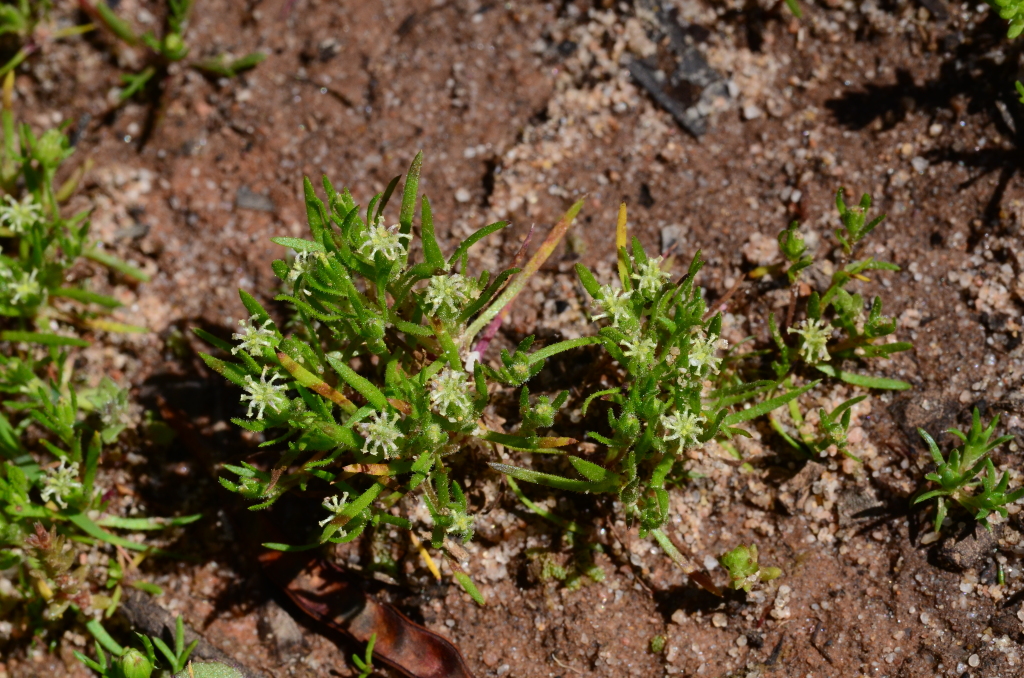Millotia
Prostrate to erect annual herbs with cottony and/or stalked glandular hairs. Lower leaves opposite, upper leaves alternate, all entire. Capitula solitary, terminal, discoid, homogamous. Involucral bracts 1–2-seriate, free or connate, mainly herbaceous to mainly scarious with a herbaceous midrib; receptacle slightly concave, flat or convex, ebracteate. Florets bisexual; corolla tubular, curved throughout its length or at least reflexed below the limb at anthesis, 3–5-lobed; anthers as many as corolla-lobes, shortly tailed; style branches barely to strongly dilated. Cypselas usually cylindric, with an apical portion extending into a beak, or (not in Victoria) forming a cup, usually papillate, rarely c. smooth, sometimes with stalked glandular hairs; pappus absent or of barbellate to plumose bristles, equal to corolla-tube or reduced and scale-like.
16 species, all confined to central and southern Australia.
The phylogenetic position of Millotia within the Gnaphalieae is unresolved.
Short, P.S. (1999). Millotia. In: Walsh, N.G.; Entwisle, T.J., Flora of Victoria Vol. 4, Cornaceae to Asteraceae, pp. 726–729. Inkata Press, Melbourne.
 Spinning
Spinning

